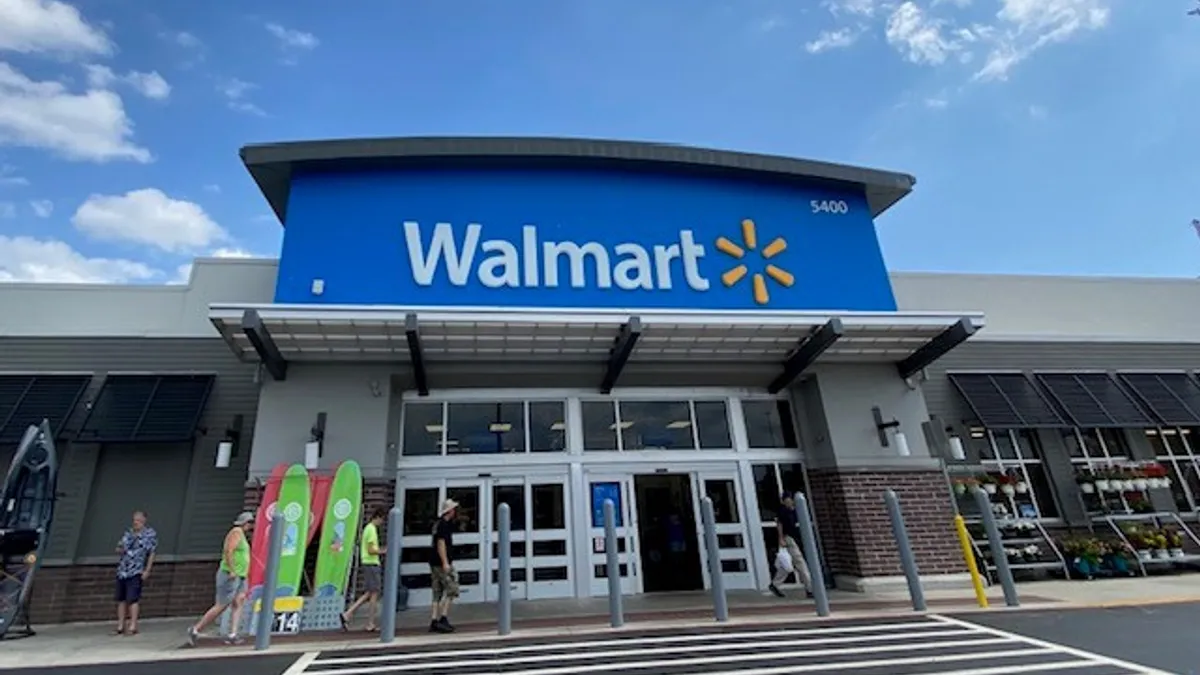Walmart’s planned $2.3 billion acquisition of smart TV maker Vizio offers another sign that retail media networks have entered a new era, one focused on expansion into premium advertising channels like connected TV (CTV) and streaming. The deal might also lend credence to concerns that retail media could follow the same path as past digital platforms, with just a handful of dominant players rising to the top to establish walled gardens in the vein of Google and Meta. Brands that relied on Vizio for media planning and buying and measurement may soon need to turn to Walmart to conduct those areas of business, shrinking their options.
“This is a positive move for Walmart and Vizio, but will undoubtedly shake up the space for advertisers currently relying on Vizio’s raw viewership data as part of their advertising or measurement stack,” Ashwin Navin, CEO of Samba TV, said in comments shared with Marketing Dive. Navin claims Samba TV is now the “only independent first-party TV data and measurement provider in the market.”
Vizio was valued by marketers for interoperable data sets stemming from areas like its automatic content recognition (ACR) technology that helps identify what the viewer of a smart TV is watching. The fear for some media executives is that that data may become harder and more expensive to access under Walmart’s ownership. Walmart Connect declined to comment on specifics of the deal due to the acquisition not being finalized.
A game-changing deal?
Walmart is purchasing Vizio to strengthen its U.S. retail media arm Walmart Connect, already a category leader. Walmart Connect saw growth up 30% in fiscal 2024, while the big-box store’s global ad business that includes offerings like FlipKart reached $3.4 billion in revenue. Vizio brings over its own suite of ad solutions and more than 500 direct brand relationships, expanding Walmart Connect’s scale. Vizio’s Platform Plus unit which mostly focuses on advertising accounts for the majority of gross company profits.
While the long-term impact of the acquisition is yet to be seen, it’s clear Walmart intends to create a more robust ecosystem where it can link together various channels, such as its Walmart+ e-commerce platform and Vizio’s CTV capabilities, to drive effective advertising. That is to say, Walmart could start to look a lot more like Amazon, which is also ramping up a focus on advertising via its Prime Video streaming portal and owns the rival Fire TV line of hardware.
“The acquisition of Vizio by Walmart is a game-changer for the retail and streaming sectors, even if it’s not ultimately so surprising,” said Alex Yip, director of CTV product at AppsFlyer, over email. “Walmart is not only adding a popular private label TV brand to its portfolio, but also gaining access to a huge amount of first-party consumer data that will enhance its advertising and streaming capabilities.”
“This deal will help Walmart diversify its revenue sources, increase its customer loyalty, and challenge Amazon’s dominance in the e-commerce and streaming sectors,” Yip continued.
CTV convergence
Other retail media networks have turned to CTV as their next big opportunity, courting marketers that want to deliver more precise advertising on the backs of first-party shopper data. Those demands have continued to climb as signal loss intensifies amid the death of the cookie.
“As Google deprecates third-party cookies and advertisers continue to seek new opportunities to get in front of their audiences, we will see a convergence in digital advertising, especially with growing channels like retail media and CTV,” said Brian Gleason, chief revenue officer at Criteo, over email.
Areas like CTV give retail media networks the chance to try and flex their muscles with upper-funnel tactics where they have historically been lacking. With Vizio, Walmart Connect closes the knowledge gap even faster. Researcher eMarketer expects CTV advertising revenue in the U.S. will climb 22.4% to reach $30.1 billion this year.
“The move gives Walmart a strong foothold in the CTV advertising market,” said Nikhil Raj, a former Walmart executive who now serves as chief business officer for retail media at Moloco, in an email. “It also collapses the CTV ads value chain enabling Walmart to place the demand from retail media on its own supply, no different than Amazon with its Prime Video inventory.”























